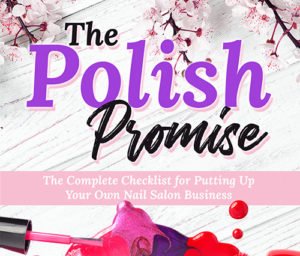Discover the essential steps to crafting a compelling business proposal for your nail salon.
Creating a compelling business proposal for a nail salon is a critical step towards securing funding and attracting potential partners. This process involves thorough research, strategic planning, and a clear demonstration of the salon’s potential for profitability.
In this article, you’ll find the essential elements to include in your nail salon business proposal, such as the executive summary, business description, market analysis, organization and management structure, services and pricing, marketing and sales strategy, and financial projections.
Each section will be broken down in detail, providing you with a comprehensive guide to help you craft a persuasive and effective business proposal.
Key takeaways:
- Understand the nail salon industry and market landscape.
- Research and analyze competitors to identify gaps in the market.
- Define your target customer base and tailor services and marketing strategies accordingly.
- Offer a variety of services and products that cater to different client preferences and budgets.
- Create accurate financial projections and develop a solid marketing strategy to attract and retain customers.
Business Description of a Nail Salon

A nail salon business primarily offers nail care services such as manicures, pedicures, and nail enhancements. It may also provide additional services such as waxing and skin care treatments, contributing to its revenue streams.
The salon could be a standalone establishment, or part of a larger institution like a spa or hotel. Furthermore, it could also offer mobile services, catering to customers at their homes or offices. It’s crucial to outline the business’ operating hours, to suit the convenience of the expected customer base.
Additionally, detailing the salon’s unique selling propositions such as eco-friendly practices or exclusive nail art designs will provide it a competitive edge.
Analyzing the Nail Salon Industry
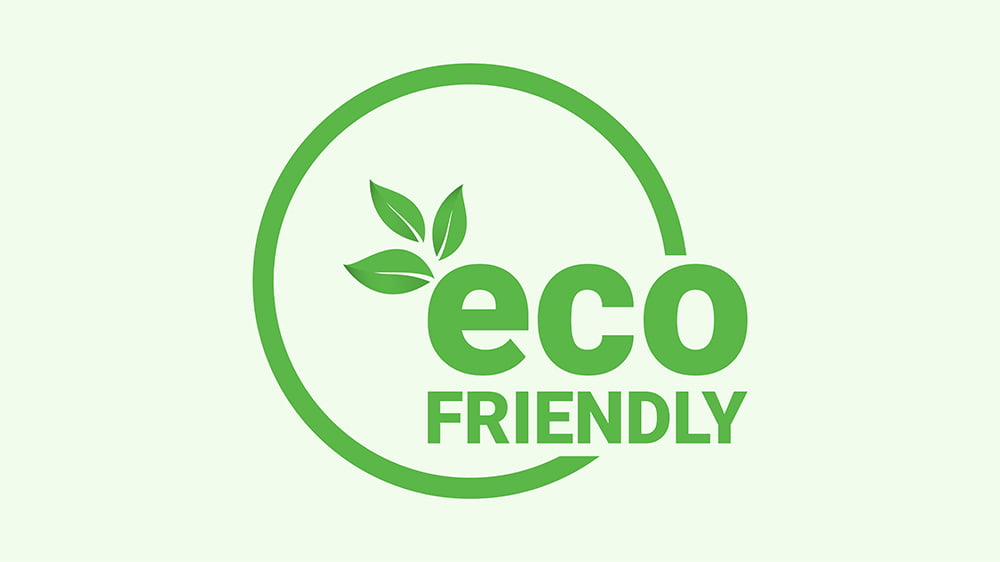
Understanding the current market landscape is crucial in any business venture. The nail salon industry is flourishing, with an increasing number of consumers appreciating professional nail care. In 2018, the industry generated around $8.53 billion in revenue in the US alone, indicating its robustness.
It’s characterized by fierce competition due to low entry barriers but also strong growth possibilities as beauty treatments become more prevalent. Current trends include eco-friendly practices, innovative nail designs, the popularity of organic products, and an increased demand for high sanitation standards.
However, there are challenges too, primarily related to regulatory hurdles since the industry operates directly with consumer health. Constantly evolving fashion trends require staying on top of the latest color pallets and techniques. Additionally, worker turnover is high in this industry, indicating the need for robust staff recruitment and retention strategies.
Consider the specifics of your local market – the number and types of other nail salons operating in the area and the demand for their services. This information will provide a sense of frameworks to plan operations, marketing, and financial strategies.
By dissecting these patterns and anticipating future trends, business owners can position themselves for success and curate a business strategy tailored to their target customer base.
Conducting Competitor Research

Understanding your competition in the nail salon industry is crucial. Begin by identifying other nail salons in your area, noting their prices, types of services, AR, and customer incentives.
Then, examine their online presence. Analyze their website design, social media engagement, marketing strategies, and customer reviews. This invaluable information will help you pinpoint their strengths and weaknesses, and identify gaps in the market you can fill to draw customers to your salon over theirs.
Don’t forget to stay aware of wider industry trends too, whether it’s eco-friendly products, hygienic procedures, or novel nail art designs. This diligent effort in competitor research lays a strong foundation for your business strategy.
Defining the Target Customer Base for a Nail Salon

Understanding your clientele is crucial in delivering pertinent services and designing suitable marketing strategies. Generally, nail salons cater predominantly to adult women, though some salons broaden their services to attract men and children. Age, occupations, lifestyle, and disposable income will vary among clientele.
Professionals, for example, will value fast and efficient service, possibly during their lunch breaks, while retirees or homemakers might prefer a luxurious, leisurely experience. Busy parents may appreciate a salon that offers services for children. By drilling down into these specifics of your customer base, you can deliver personalized services and successful target-market advertising campaigns.
Diversifying your services and strategies accordingly can grant you access to a broader demographic, ensuring a steady flow of customers. Remember, identifying your target customer doesn’t mean turning away other types of clients. It simply allows you to focus your attention where it’s most likely to generate business.
Selecting the Products and Services to Offer
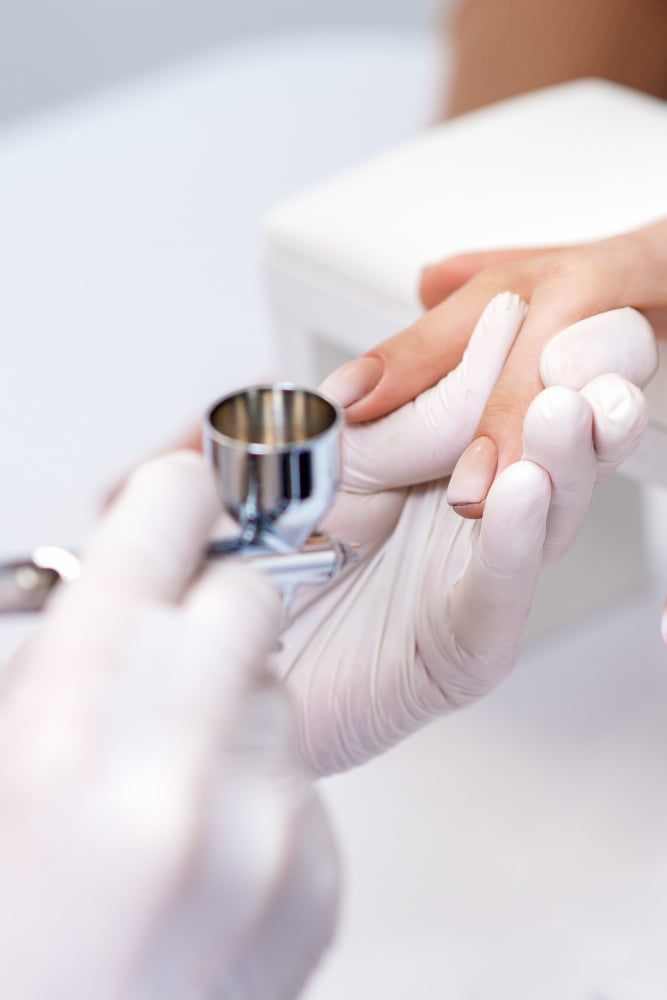
Variety is key when deciding on the range of services to offer. Choices should span across basic manicures and pedicures, nail enhancements – acrylic or gel nails, nail art, and even spa services if your space and budget allow.
Product selection also plays a large role in the experience your salon provides. Opt for quality nail polish brands that will leave your clients satisfied with their finish and durability, reducing the likelihood of chipping and hence, complaints. Additional items like lotions, cuticle creams, and nail care tools make great upsell or even retail products.
Complement your services with products that cater to different client preferences. Some may prefer vegan or cruelty-free products, while others prioritize the longevity of their manicure.
Moreover, it’s crucial to keep ahead of market trends. Offering the latest in nail care technology, like dip powder nails or innovative treatments, ensures your salon remains a go-to destination for all things nail care.
Both your services and products should cater to clients with varying budgets – consider offering luxury services for those willing to splurge, and basic, affordable options, so your salon appeals to a broader customer base.
Proper training for staff is indispensible, ensuring a high standard of service across all offerings and building customer trust. Hence, allocating part of your budget to staff skill enhancement is a well-thought-out decision.
Calculating the Startup Costs for a Nail Salon

Identifying specific startup costs directly impacts the success of your business venture.
Equipment purchases form a substantial part of the initial costs, including manicure tables, pedicure chairs, nail polish displays, and sterilization equipment.
Remember to budget for signage, a critical investment for attracting pedestrian and drive-by traffics.
Next, consider the cost of inventory. Stocking up products like nail polishes, removers, and sanitizers is essential.
Leasehold improvements might be necessary. Customizing the space to create a conducive environment for your clients could require costs like partitioning, carpeting, and installing specific utilities.
Salon software for bookings and client data management is a digital-age necessity, also consider spending on a website for online visibility.
Lastly, plan for incidental expenses. These are unforeseen costs, including minor renovations or equipment repairs. It’s wise to set aside funds for such eventualities. Worth mentioning is the fact that these costs will vary based upon location, size of the salon, and product choices.
Keep a meticulous track of these elements as miscalculations or overlooking an expense could lead to budget overrun or financial hardships later. The listed expenses are indicative and meant to guide you in preparing a comprehensive list of startup costs.
Choosing an Ideal Location for a Nail Salon

When it comes to siting your nail salon, there are several key factors to consider. First, the vicinity should have high foot traffic. Shopping plazas, malls, and city centers often fit the bill and can provide a steady stream of potential customers. However, also keep in mind that these locations might be more expensive to lease.
Second, ensure the place is easily accessible. Ample parking spaces or proximity to public transport can make your salon more appealing to clients. Remember, convenience is crucial in this industry.
Third, research zoning laws in your desired area. Some regions have restrictions on certain types of businesses, and you don’t want any surprises after investing time and money.
Finally, observe the surrounding businesses. Adjacency to complementary businesses like hair salons or fashion boutiques can create opportunities for cross-promotion and increase your client base.
Remember, location plays a critical role in the success of your nail salon. It’s not just about where you set up shop, but how this positioning favors your business growth.
Securing the Necessary Licenses and Insurance for a Nail Salon

Firstly, obtain the necessary business license and arrange all pertinent local, state, and federal registration requirements. It’s essential to understand that legal requirements vary significantly by region, so local Small Business Administration resources can assist in this process.
Secondly, obtaining a professional liability insurance is paramount. It protects against potential lawsuits from disgruntled clients or unforeseen accidents. Discuss with your agent to ensure your policy adequately covers all areas of your business operations.
Next, comply diligently with health and safety regulations, specifically those created by the Occupational Safety and Health Administration (OSHA) for salons. These regulations mandate the use of safe chemicals and set guidelines for emergency procedures and proper ventilation.
Lastly, remember to secure a sales tax permit. Nail salon services are taxable in most areas of the U.S. Review your state’s Department of Revenue guidelines to ensure that your salon is compliant with sales tax laws.
Overall, securing licenses and insurance are crucial steps in setting up your nail salon business. Overlooking these can result in hefty fines and possibly compromise the longevity of your enterprise. Always seek legal counsel when unsure, to avoid any potential legal pitfalls.
Setting the Appropriate Pricing Model for Services
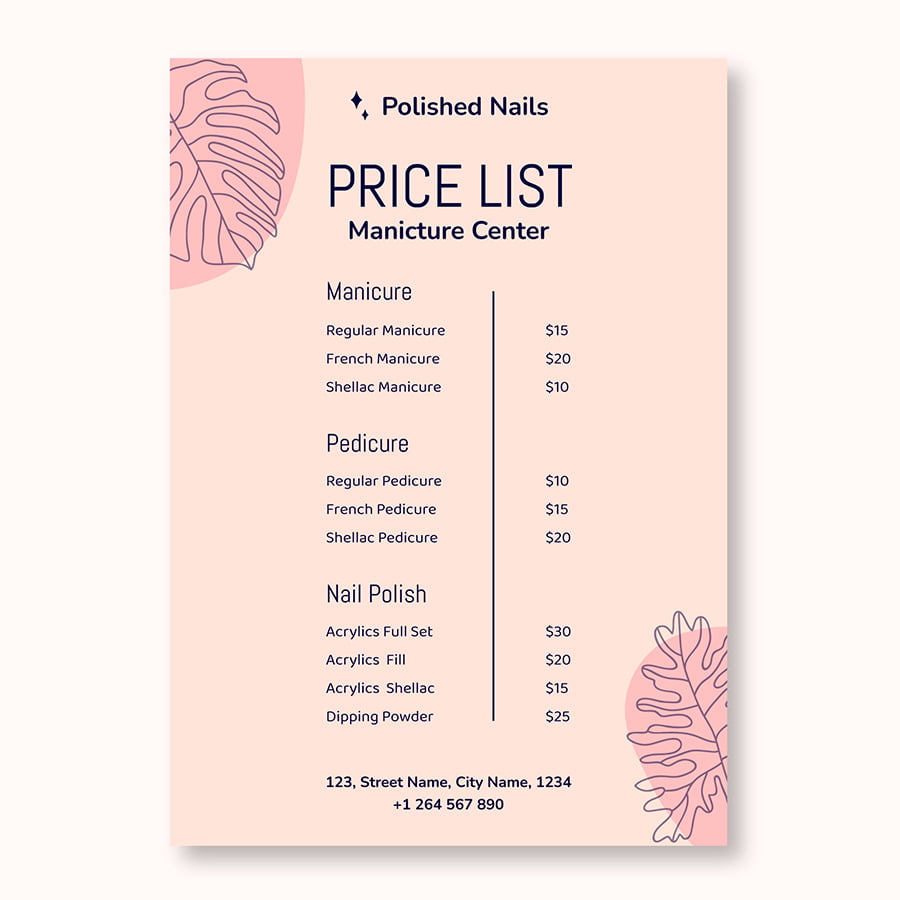
To arrive at a viable pricing model, consider costs associated with offering different services. Prices need to cover those costs, leave a profit margin, and align with the market standard in your location. For this, a comprehensive cost analysis may be required. Include all expenses – from nail polish to work supplies, rent to utilities, salaries to insurance premiums.
Next, assess competitor prices to understand the industry standard. This exercise will shed light on a potential customer’s willingness to pay. It can also help identify any gaps in the market, like premium services that you offer but others don’t. Factor in your unique selling propositions while setting the prices.
Remember, it’s essential not to undervalue your services. A price that’s too low can deter clientele who may associate it with lower quality. Equally, a price that’s too high may alienate potential customers.
Opt for tiered pricing options to cater to a wider audience. For instance, offer basic, premium, and luxury packages. This flexible pricing model ensures inclusivity, attracting a diverse set of consumers to your nail salon.
Finally, consider seasonal pricing or offering occasional discounts and promotions. It can be an effective way to entice new customers while simultaneously rewarding loyal ones. Regularly review your pricing strategy to reflect changes in costs or market trends, ensuring it remains profitable and competitive.
Creating Financial Projections for a Nail Salon

Creating accurate financial projections is critical to the success of your nail salon. This not only aids in securing funding, but also assists in planning and preparing for future growth.
1. Revenue Estimates: Your revenue projection should be based on a realistic estimate of how much you expect to earn from your services. This requires a deep understanding of your pricing model and an estimate of how many clients you can expect on a regular basis.
2. Cost Projection: Running a nail salon involves various costs such as rent, utility bills, staff salaries, product costs, and marketing expenses. Additionally, don’t overlook unexpected or variable expenses such as repair and maintenance costs.
3. Profit and Loss Statement: This gives a picture of your salon’s financial health. Subtract your expenses from your revenue to determine your net profit or loss.
4. Cash Flow Projection: Cash flow problems can be detrimental to any business. Prepare a forecast to keep track of when cash will come in and go out to avoid a negative cash balance.
5. Breakeven Analysis: This indicates when your nail salon will start making profits. Knowing your breakeven point facilitates operational and growth planning.
Given the importance of accuracy in financial projections, it’s advisable to seek expert assistance if necessary. Remember, these figures are not stagnant; regular reviewing and updating of your projections is key to align with the actual business performance.
Formulating a Solid Marketing Strategy

To cultivate a robust marketing approach, consider the following key points.
Begin by understanding your target market. Knowing your customers’ needs, wants and preferences is crucial to creating services that meet their expectations. Study your customers, inform your services with their habits and tendencies, and tailor your marketing messages accordingly.
Next, pay attention to brand consistency. From your salon’s interior design to your company logo and color scheme, every aspect of your nail salon should reflect your unique selling point. If your brand promises luxury, your services and products must exude the same.
Leverage on the power of social media. Fashion forward platforms like Instagram and Pinterest are particularly potent for a nail salon. Enthrall your audience with stunning, high-quality photos of your nail designs. Regular updates about your latest services and promotional offers can also keep your audience engaged.
Finally, foster relationships with your customers. Connect with them not just through professional service provision, but by showing genuine concern for their well-being. This strategy prompts word-of-mouth recommendations, which are invaluable for business growth.
Don’t forget local partnerships. Collaborate with other local businesses to organize joint promotional activities that can drive customers to your salon.
Thus, your marketing strategy should be an amalgamation of creativity, consistency, well-targeted communication, digital presence, and quality customer service.
Deciding the Advertising Platforms for a Nail Salon

In today’s digital age, having a strong online presence is paramount. A well-designed website should be your starting point, glowing with images of your salon and the services it offers.
Meanwhile, social media platforms like Facebook and Instagram provide excellent opportunities to show off your unique style and engage directly with customers.
Google AdWords and SEO are also crucial to ensure you appear in potential clients’ search results.
Traditional forms of advertising, such as local newspapers and magazines, can still prove beneficial, particularly for targeting older demographic groups.
Partnerships with related businesses, such as beauty salons, spas, and hotels, offer another avenue for promotion. Collaborating for mutual advertisement can provide added visibility, reaching a diverse clientele that may not have noticed your nail salon otherwise.
Networking at local community events is another way to increase your salon’s footprint.
Remember, each platform has its strengths and weaknesses, so carefully evaluate where your target customers are likely to spend most of their time. It’s all about bringing your brand directly to them.
Designing a Customer Retention Plan
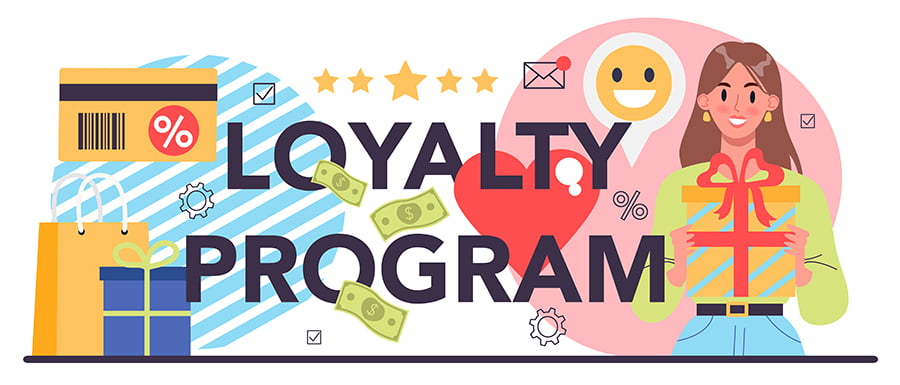
Effective customer retention starts with offering top-quality services that make your nail salon the go-to place for nail care and beauty services.
But, supreme service delivery shouldn’t stop at doing a fantastic manicure. Consider the overall customer experience in your salon. This includes the ambiance, the comfort of your salon, friendliness, and professionalism of your staff.
Next, focus on client engagement. An opportunity you have here is with a simple follow-up system. Send out appointment reminders, thank you messages, and special day greetings. Delight your customers by remembering their birthdays, it’s personalized for each client and adds a warm touch to your customer service.
No retention plan is complete without a loyalty program. Reward your frequent clients with a point system that can be redeemed for free services after a certain threshold. It incentivizes repeat business.
Lastly, get feedback. Be open to both positive and negative feedback. It shows your customers that their opinion matters to you. Use this feedback to make necessary changes to improve your salon services.
In all, a well-structured customer retention plan will help turn your customers into fans, who will then become ambassadors to your nail salon. Keep it innovative, personalized and customer-focused. Recognize that your customers are individuals with unique needs and preferences and cater to them.
Staff Recruitment Planning and Strategies for a Nail Salon
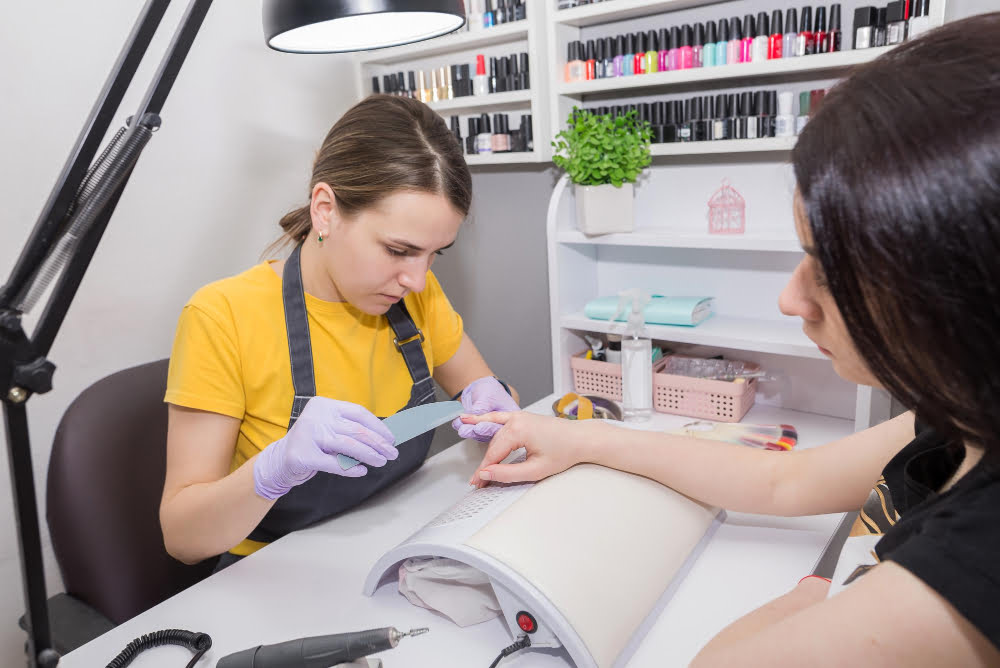
Successful operation of a nail salon relies heavily on the talent and skill of the team. Consider the roles essential to delivering excellent customer service – nail technicians, aesthetician, receptionist, and cleaner. Hire licensed nail techs with a strong knowledge base and a flair for customer service. Prior experience is an additional feather in the cap.
Use platforms like LinkedIn, Indeed, and local beauty schools for recruitment. Hold in-person interviews, if possible, to understand the candidate’s societal skills and know-how of the profession in-depth.
Brush up your training plans considering the ever-evolving fashion trends. Encourage your staff for continued learning, making your salon stand out in offering the latest trends.
Motivate the team with recognitions, competitive pay and benefit packages. Happy employees are directly proportional to content customers. Also, create definitive shift schedules to ensure smooth operations.
FAQ
What is the value proposition of a nail salon?
The value proposition of a nail salon is the delivery of a wide range of quality beauty services using high-quality beauty products from trusted brands.
How would you describe a nail salon business?
A nail salon business is a commercial enterprise that provides services such as manicures, pedicures, nail polish application, nail repair, and hand and foot treatments for both men and women.
How can the location and demographics influence the success of a nail salon?
The location and demographics significantly influence a nail salon’s success, as the business’s profitability depends on its proximity to a target market large enough to sustain its operations.
What are the essential components of a business plan for a nail salon?
The essential components of a business plan for a nail salon include an executive summary, company description, market analysis, organization and management structure, services or products line, marketing and sales strategy, financial projections, and an appendix.
What marketing strategies can be effective for a nail salon business?
Effective marketing strategies for a nail salon business can include leveraging social media platforms, offering referral incentives, using email marketing, organizing events, and providing excellent customer service.
